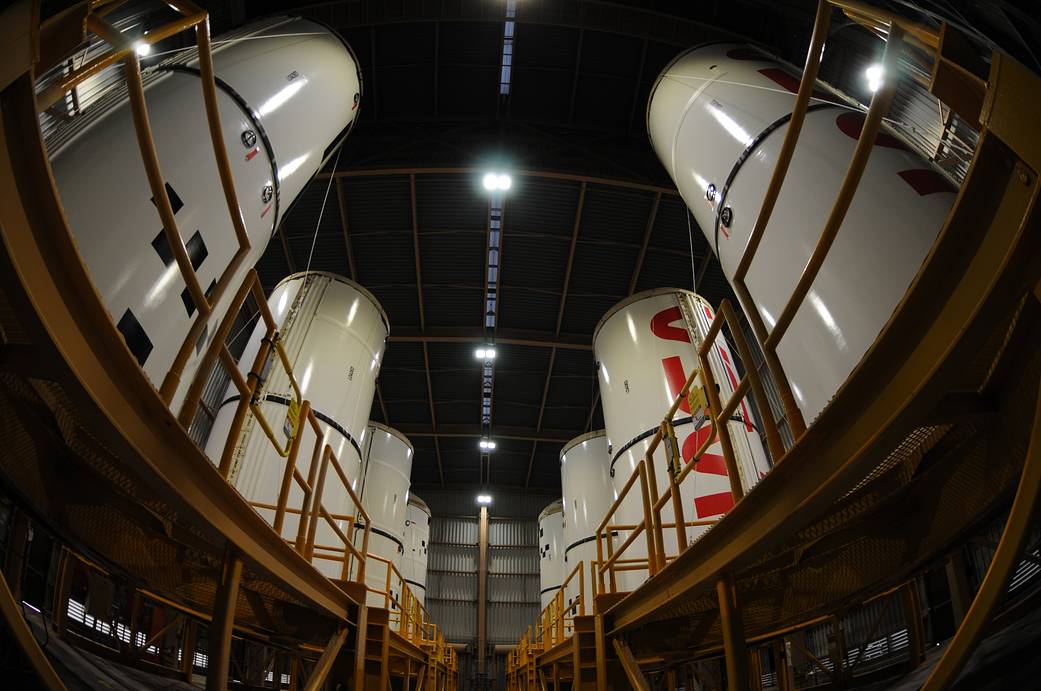Eight rocket motor segments for the first flight of NASA’s Space Launch System (SLS) are lined up in preparation for stacking at NASA’s Kennedy Space Center in Florida. As each segment completed processing, workers moved them to the surge bay at Kennedy’s Rotation, Processing, and Surge Facility. Each of the fully assembled, 177-foot-tall solid rocket boosters on SLS produce more than 3.6 million pounds of thrust and together provide more than 75% of the total thrust during the first two minutes of launch and flight. The booster segments will help power the first Artemis mission of NASA’s Artemis program with the SLS rocket. NASA’s Exploration Ground Systems team transported the motor segments to the Vehicle Assembly Building (VAB), and will use a crane to lift the booster segments and stack them one by one on the mobile launcher. The bottom section of the boosters, known as the aft assemblies, were completed in November and moved to the VAB, and the first of the two pieces was placed on the mobile launcher Nov. 21. The boosters are the first elements of SLS to be installed on the mobile launcher ahead of the Artemis I launch. After booster stacking is complete, the core stage, which is undergoing final Green Run testing at NASA’s Stennis Space Center near Bay St. Louis, Mississippi, will be delivered to Kennedy and moved to the VAB to continue rocket construction.
NASA is working to land the first woman and the next man on the Moon by 2024. SLS and Orion, along with the human landing system and the Gateway in orbit around the Moon, are NASA’s backbone for deep space exploration. SLS is the only rocket that can send Orion, astronauts, and supplies to the Moon in a single mission.
Image Credit: NASA



























